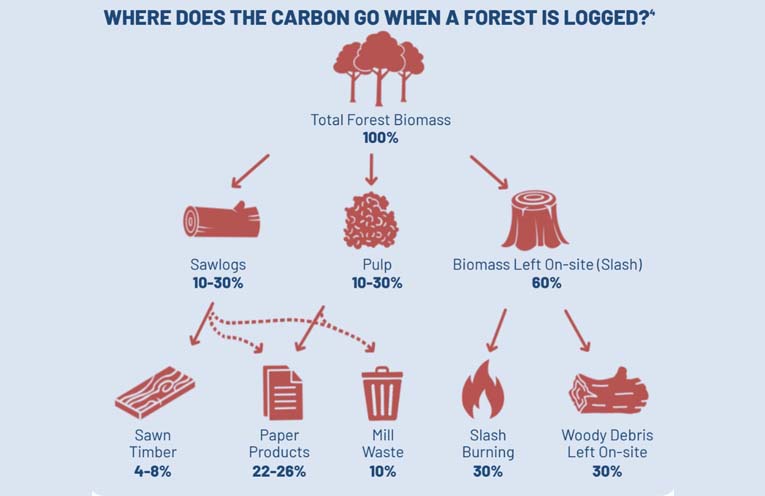
A NEW report released last Thursday, titled ‘NSW Forest Carbon: An Effective Climate Change Solution’, shows that logging in New South Wales emits 3.6 million tonnes of carbon each year.
The report says that this equates to 840,000 cars, or the emissions from Australia’s aviation industry.
It complements another two reports which indicate that Victoria’s native forest logging industry emits 3 million tonnes of carbon each year, while logging in Tasmania emits 4.6 million tonnes.
The figures show that protecting native forests in NSW, Victoria and Tasmania would prevent 212 million tonnes of carbon from entering the atmosphere by 2050, the equivalent benefit of shutting down Australia’s dirtiest coal power plant for 22 years.
Dr Jennifer Sanger, from the Tree Projects, is the author of the three reports and says the results are alarming.
“I think many Australians would be shocked to find out that native forest logging is such a high emitting industry,” Dr Sanger said.
The reports were written in response to the lack of transparency in current emissions reporting requirements.
“Due to the way that emissions are reported, the emissions from native forest logging are not separated from the carbon dioxide absorbed by our forests,” said Dr Sanger.
“Only a net figure is reported, which masks the true level of forestry’s emissions.”
The NSW report states, ‘When forests are logged, two-thirds of the carbon is released within two years.
‘Some of these carbon dioxide emissions will be recovered as some native forests regrow after logging.
‘However, it takes many decades to centuries for forests to capture lost carbon’.
Dr Sanger’s report says that two-thirds of the forest’s carbon is released within a few years, while the remainder can take up to 50 years to be emitted.
It says that, when a native forest is logged, two-thirds of the carbon is released within two years because most wood removed from the forest is wood chipped and turned into short-lived products like paper and cardboard.
The burning of waste left on-site and mill waste also releases greenhouse gases immediately.
It acknowledges that sawn timber has the longest lifespan of up to 90 years, but claims this only makes up four to eight percent of the forest’s carbon.
Although forests that are logged are regrown, it can take decades, or longer, to recapture the emitted carbon.
“We need to act now on climate change and for Australia, this means ending native forest logging,” Dr Sanger said.
She said protecting forests is a low-cost, effective and immediate way to achieve emissions reduction.
“If the Australian Government wants to get serious about climate change then they need to act on this issue.”
The reports can be found at www.thetreeprojects.com/forestcarbon.
By Andrew VIVIAN
Great and easily understood article, thank you.